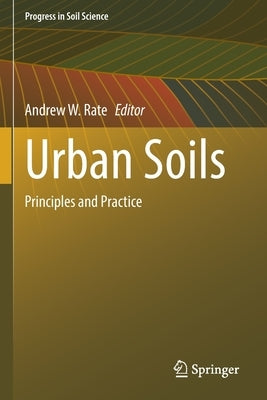Description
The authors reflect current developments in research and urban trends. In China, for example, the proportion of the population living in cities increased from 13% in 1950 to 45% in 2010 (World Bank data). Australia is one of the world's top ten urbanised countries with population greater than ten million, with approximately 90% of its population living in cities, mainly along Australia's coast. The most rapidly urbanising populations are currently in nations of the African continent. Soils in urban areas have multiple functions which are becoming more valued by urban communities: soils supply water, nutrients and physical support for urban plant and animal communities (parks, reserves, gardens), and are becoming increasingly valued for growing food. Soils may be used for building foundations, or as building materials themselves. Urban hydrology relies on the existence of unsealed soils for aquifer protection and flood control.
This volume presents the importance of urban ecosystems and the impacts of global change. It examines pedogenesis of urban soils: natural materials affected by urban phenomena, and natural processes acting on urban materials, including an examination of different climatic zones. There is a focus on soils formed on landfill, reclaimed land, dredge spoils as well as soil-related changes in urban geomorphology. There is plenty of discussion on urban soil as a source and sink as well as soil geochemistry and health.
The book is intended primarily as a text for upper-level undergraduate, and postgraduate (Masters) students. It will also be invaluable as a resource for professionals such as researchers, environmental regulators, and environmental consultants.
Author: Andrew W. Rate
Publisher: Springer
Published: 01/09/2023
Pages: 446
Binding Type: Paperback
Weight: 1.41lbs
Size: 9.21h x 6.14w x 0.93d
ISBN13: 9783030873189
ISBN10: 3030873188
BISAC Categories:
- Nature | Environmental Conservation & Protection | General
- Science | Global Warming & Climate Change
- Science | Life Sciences | Ecology
About the Author
Dr Andrew Rate has worked at The University of Western Australia since 1995 after postgraduate training in chemistry and soil chemistry in New Zealand. He has published research relating to geochemistry in multiple areas, including estuaries, mineral exploration, mine rehabilitation, analytical chemistry, hydrology, mineralogy, agriculture, and urban contamination. Dr Rate's main areas of teaching and research are currently in Environmental Geochemistry. His present areas of research activity and publication are centered around understanding the behaviour of trace and rare-earth elements in Earth-surface environments, soils and sediments in urban environments, and acid sulfate soils.

